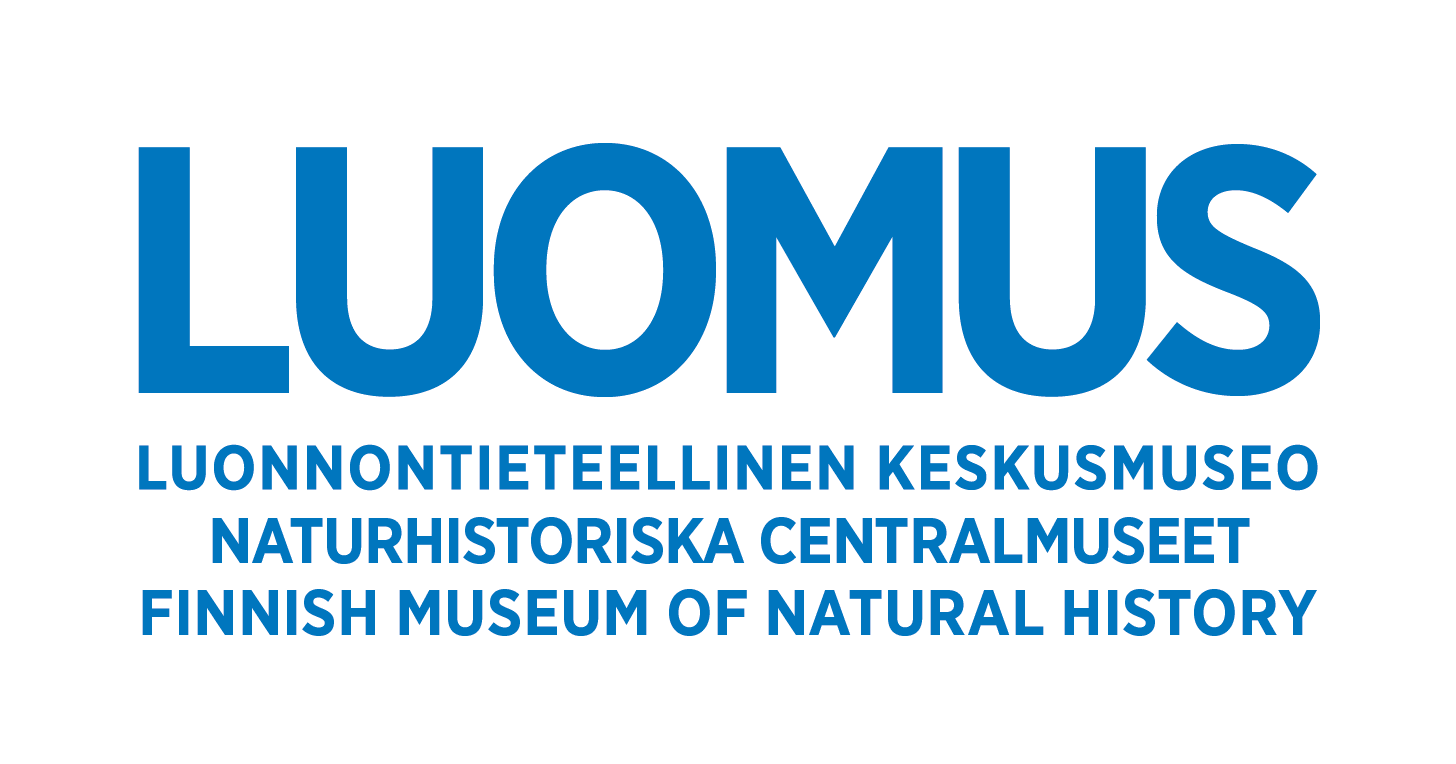Linkit PDF-julkaisuihin/links to PDF pages
Observations of the aquatic invertebrate fauna in feeder drains in fields in Hausjärvi, southern Finland
Hirvenoja, M. 2001: Observations of the aquatic invertebrate fauna in feeder drains in fields in Hausjärvi, southern Finland. — Sahlbergia 6: 1-8. Helsinki, Finland, ISSN 1237-3273.
Aquatic invertebrates from a few feeder drains of the fields with a permanent water stand or water flow were netted and if necessary (the chironomids) reared to the adult stage. The water chemistry showed high amounts of plant nutrients and soil improvers (e.g. Ca). 18 invertebrates including the xenosaprobic spring species and species with at most a lower beta-mesosaprobic indication value were found.
Distribution of ladybirds in Finland (Coleoptera: Coccinellidae)
Biström, O., Albrecht, A., Huldén, L. & Salminen, J. 2001: Leppäpirkkojen levinneisyys Suomessa [Distribution of ladybirds in Finland (Coleoptera: Coccinellidae)]. — Sahlbergia 6: 9-28. Helsinki, Finland, ISSN 1237-3273.
The distribution of the ladybird fauna in Finland is mapped. The records are plotted on maps map (grid 10 x 10 km) as follows: Old records, before the year 1975 with a + symbol and more recent records with a circle. Tytthaspis sedecimpunctata (Linnaus) is removed from the Finnish fauna. Platynaspis luteorubra (Goeze), Calvia quindecimguttata (Fabricius), Coccinella magnifica Redtenbacher and Oenopia conglobata Linnaeus seem to be declining species, while Coccidula scutellata (Herbst) and Hippodamia notata (Laicharting) are expanding in Finland.
Observations on Coleoptera during a seminar dealing with beetles in Kuhmo in 1996
Martikainen, P. 2001: Kovakuoriaisseminaari Kuhmon Viiksimossa 16.-18.8.1996. [Observations on Coleoptera during a seminar dealing with beetles in Kuhmo in 1996] — Sahlbergia 6: 29-33. Helsinki, Finland, ISSN 1237-3273.
The beetle working group of World Wide Fund for Nature Finland has organised seminars for Finnish coleopterologists every summer since 1986. Collecting trips to interesting habitats have always formed an essential part of these meetings. One of the most successful seminars so far was held in Kn: Kuhmo, eastern Finland, near the Russian border in 16-18 August 1996. Altogether 14 coleopterologists participated in this one-weekend meeting. As many as six threatened, five near threatened and some 250 other species of beetle were collected mainly from the Elimyssalo Nature Reserve and adjacent forest areas during the weekend. Threatened species found included Pytho kolwensis Sahlberg, P. abieticola J.Sahlberg, Boros schneideri (Panzer), Corticeus fraxini (Kugelann), Acmaeops septentrionis (Thomson) and Platyrhinus resinosus (Scopoli). This example shows that even a short collecting trip made by several specialists can be an effective method in surveying rare and threatened species in a certain forest area.
Some observations concerning incorrectly determined beetles in public collections. (Coleoptera)
Muona, J. 2001: Huomioita eläinmuseon kuoriaskokoelmien virhemäärityksistä [Some observations concerning incorrectly determined beetles in public collections. (Coleoptera)]. — Sahlbergia 6:34-36. Helsinki, Finland, ISSN 1237-3273.
Entomological collections tend to contain incorrectly identified material. Both scientific problems and inadequate curating contribute to this. A small sample of the Coleoptera section of the collections of the Finnish Museum of Natural History was studied in order to get an idea of the extent of the curating problem. The results suggest that the overall percentage of incorrectly identified specimens is less than four. The highest percentages were not found in the known difficult cases (Hylocoetus, Arhopalus) but among the “easily” identifiable buprestids (Poecilonota, Dicerca). Tendencies observed were quite human – the commonest species, Poecilonota, was usually correctly identified, but many specimens of the rare Dicerca species turned out to be Poecilonota as well!
Clearly all collectors should check the identification of rare species, even if large and distinct, by comparing them with related forms. Also, when curating new acquisitions, museum personel should check the identifications of large and distinct beetles as carefully as they would one of an aleocharine.
Short announcements — Lyhyitä tiedonantoja — Korta meddelanden
Seuraavat tiedonnannot on esitetty Suomen Hyönteistieteellisen Seuran (SHS) ja Helsingin Hyönteistieteellisen Yhdistyksen (EFH) kokouksissa.
Följande meddelanden har presenterats på Suomen Hyönteistieteellinen Seuras (SHS) och Entomologiska Föreningens i Helsingfors (EFH) möten. Sahlbergia 2001: 37-41.
Book review — Kirja-esittely
Melittologian merkkiteos
Michener, Charles, D. 2000: The Bees of the World. The John Hopkins University Press. Baltimore ja Lontoo. 913 s. ISBN 0-8018-6133-0. Hinta 1260 DKR (Apollo Books). Sahlbergia 2001: 42-44.
Checklist of Finnish Lepidoptera
Kullberg, Jaakko, Anders Albrecht, Lauri Kaila & Vesa Varis 2002: Checklist of Finnish Lepidoptera – Suomen perhosten luettelo — Sahlbergia 6: 45-190. Helsinki, Finland, ISSN 1237-3273.
The Lepidoptera species recorded from Finland until the end of 2001 are listed, the present total number being 2473. Changes with respect to the previous Finnish checklist are briefly annotated and the distributions for all the species in each of the 21 biogeographical provinces are presented. Accidentally imported species are not included. After the publication of our previous checklist, 98 species have been recorded as new to Finland. Of these 49 are considered as irruptive, 23 species as expansive and 26 as native Finnish species. Tinea pallescentella, earlier considered as imported is now considered as an indoor pest and added to the list. Altogether 5 pest species occurring indoors only are resident in Finland. 10 species are represented in Finland as two separate subspecies. Finally, 7 species are omitted or their identity changed due to previous misidentifications and revisions: Apterona crenulella, Elachista regificella, Clepsis rogana, C. consimilana, Anania verbascalis, Selidosema plumarium, Diarsia florida, and 8 species reported as Finnish in the European Distributional Checklist (Karsholt & Razowski 1996) are considered erroneous: Xanthia ocellaris and Caloptilia azaleella. A few taxonomically unsettled pairs of taxa are listed as distinct species in order to pay attention to the problems. The monotypic genus Pygmaena Boisduval, 1840 is synonymized with Macaria Curtis, 1826 syn. nov., Beckeugenia Beck, 1999 with Agnorisma Lafontaine, 1998 syn. nov. and Noctua punicea Hübner, 1803 is transferred to the genus Agnorisma comb. nov.
